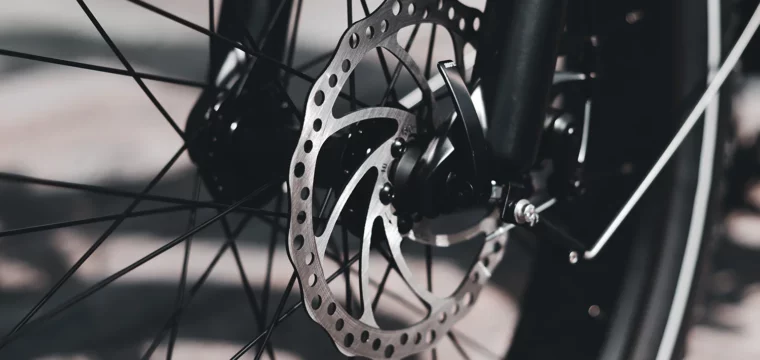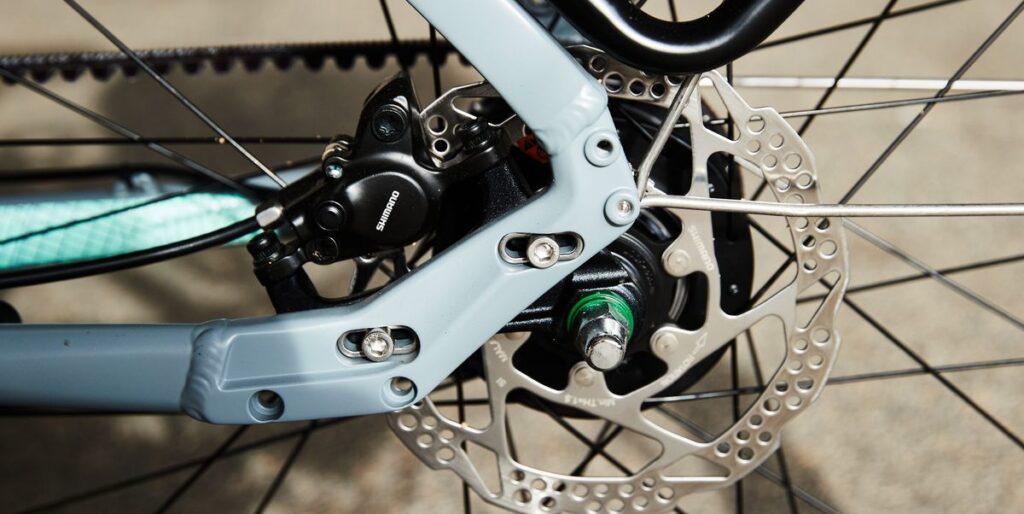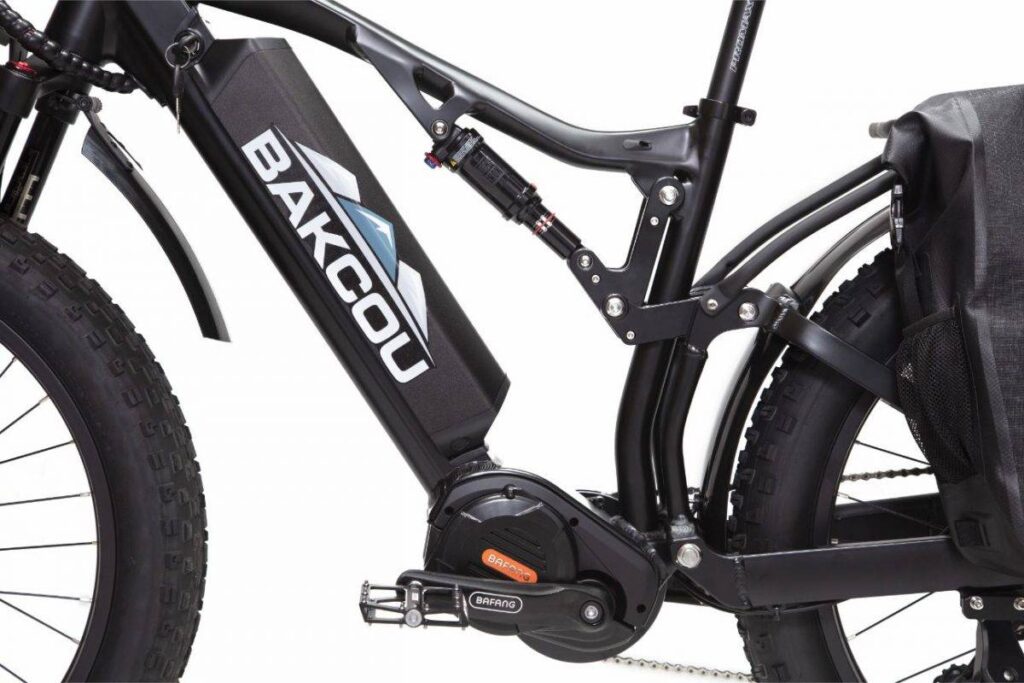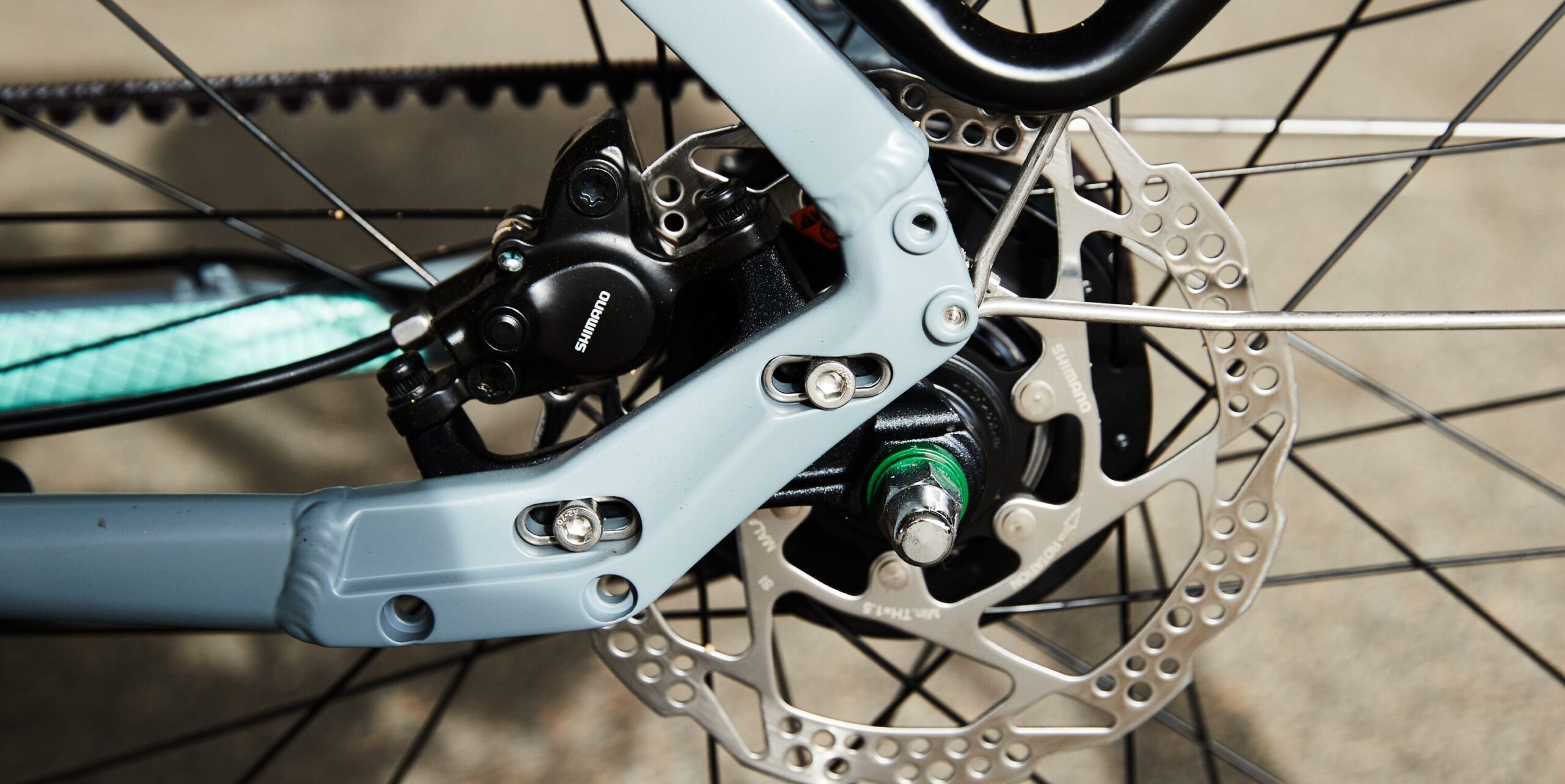Imagine yourself coasting down rugged mountain trails on your trusty electric mountain bike, feeling the rush of adrenaline as you navigate thrilling twists and turns. Now, imagine the importance of being able to bring your bike to a safe and controlled stop when needed. That’s where the brake system comes in. In this ultimate guide to maintaining the brake system on your electric mountain bike, we will provide you with essential tips to ensure your brakes are in top shape, allowing for maximum performance and a longer lifespan for your e-bike. Whether you’re a novice or experienced rider, this guide has got you covered. So, let’s dive in and discover how to keep those brakes in optimal condition for all your off-road adventures.
Brake System Upkeep: Essential Tips for Maintaining the Brakes on Your Electric Mountain Bike
Brakes are one of the most critical components of any electric mountain bike. A well-maintained brake system not only ensures your safety but also enhances your riding experience. In this comprehensive guide, we will explore essential tips and techniques for maintaining the brakes on your electric mountain bike.

1. Understanding the Brake System
Before diving into maintenance procedures, it’s crucial to understand the brake system on your electric mountain bike. Electric mountain bikes typically feature two main types of brakes: mechanical disc brakes and hydraulic disc brakes.
1.1 Brake Types on Electric Mountain Bikes
Mechanical disc brakes use a cable-operated system to engage the brake pads onto the rotor, providing stopping power. On the other hand, hydraulic disc brakes utilize fluid pressure, transmitted through a hydraulic line, to activate the brake pads. Both brake types have their advantages and maintenance requirements, so it’s essential to familiarize yourself with the specific system on your electric mountain bike.
1.2 Components of the Brake System
The brake system on your electric mountain bike consists of several key components that work together to ensure optimal braking performance. These components include brake levers, cables, brake pads, rotors, calipers, and hydraulic lines. Understanding each component’s purpose and function will help you perform maintenance tasks effectively.
2. Regular Inspection and Cleaning
Regular inspection and cleaning are crucial to maintaining the performance and longevity of your electric mountain bike’s brake system. By routinely examining your brakes and keeping them clean, you can identify any issues early and prevent potential problems.
2.1 Inspecting the Brake Pads
Start by inspecting the brake pads on your electric mountain bike. Check for signs of wear such as a thinning thickness or uneven surface. If the brake pads appear worn-out, it’s important to replace them promptly to ensure optimal braking performance and prevent damage to other brake components.
2.2 Checking the Brake Levers and Cables
Next, examine the brake levers and cables for any signs of damage, such as fraying or corrosion. Ensure that the brake levers have the proper tension and feel comfortable when engaged. If you notice any issues with the brake levers or cables, it’s important to address them immediately to maintain optimal brake responsiveness.
2.3 Cleaning the Brake Rotors
Cleaning the brake rotors is an essential step in brake system upkeep. Over time, dirt, debris, and brake pad residue can accumulate on the rotors, affecting braking performance. Use a clean cloth or specialized brake cleaner to remove any build-up from the rotors. Be careful not to contaminate the brake pads or touch them with greasy fingers during the cleaning process.
3. Adjusting Brake Performance
Proper brake performance adjustment is crucial for ensuring effective braking power and optimal control on your electric mountain bike. Here are some key adjustments to consider:
3.1 Brake Lever Reach Adjustment
Adjusting the brake lever reach allows you to customize the braking experience according to your hand size and preferences. Most brake levers have reach adjustment screws that can be adjusted to bring the levers closer or farther from the handlebar. Experiment with different reach settings to find the most comfortable and ergonomic position for your hands.
3.2 Brake Pad Adjustment
Ensuring proper brake pad alignment is essential for optimal braking performance. If your electric mountain bike has mechanical disc brakes, you can adjust the brake pads’ position manually. Make sure the pads are aligned with the rotor and centered within the caliper. Proper alignment will prevent unnecessary friction and noise, ensuring consistent braking power.
3.3 Brake Cable Tension Adjustment
For bikes with mechanical disc brakes, adjusting the brake cable tension is crucial for maintaining optimal brake performance. Proper cable tension ensures that the brake pads engage the rotor adequately when the brake lever is squeezed. Refer to your bike’s manual or consult a professional mechanic for guidance on adjusting the brake cable tension correctly.
4. Replacing Brake Pads
Regularly inspecting and replacing worn-out brake pads is essential for maintaining the safety and performance of your electric mountain bike. Knowing when to replace brake pads and how to do it correctly is vital knowledge for any rider.
4.1 Signs of Worn-out Brake Pads
Several signs indicate that it’s time to replace your brake pads. These include reduced braking power, excessive brake noise, visible wear indicators on the pads, or a thickness below the manufacturer’s recommended limit. If you notice any of these signs during your inspections, it’s crucial to replace the brake pads promptly.
4.2 How to Replace Brake Pads
Replacing brake pads on your electric mountain bike can be a straightforward process with the right tools and knowledge. Start by removing the old brake pads, making sure to note their orientation. Clean the caliper and rotor thoroughly before installing the new brake pads. Slide the new pads into place, ensuring they are aligned properly, and secure them according to the manufacturer’s instructions.

5. Bleeding the Brake System
For electric mountain bikes equipped with hydraulic disc brakes, bleeding the brake system periodically is necessary to maintain optimal performance. Brake bleeding involves removing air bubbles from the system and replacing old brake fluid with fresh fluid.
5.1 Why and When to Bleed the Brakes
Brake fluid can absorb moisture over time, reducing its performance and causing brake fade. Bleeding the brake system removes the contaminated fluid, ensures proper performance, and prolongs the lifespan of the hydraulic brake system. It’s recommended to bleed the brakes annually or when you notice a decrease in braking power or spongy brake lever feel.
5.2 Tools and Materials Needed for Bleeding
To bleed the brakes on your electric mountain bike, you will need specific tools and materials. These typically include a bleed kit, compatible brake fluid, a torque wrench, a bleeding funnel or syringe, tubing, and absorbent rags or paper towels. Consult your bike’s manual or a professional mechanic for the appropriate tools and materials specific to your electric mountain bike’s brake system.
5.3 Step-by-Step Guide to Bleeding the Brakes
Brake bleeding can be a complex process, and it’s crucial to follow the manufacturer’s guidelines or seek professional help. While the exact steps may vary depending on your brake system, the general process involves removing the old brake fluid, filling the system with fresh fluid, and purging air bubbles from the system. Always refer to the manufacturer’s instructions or consult a qualified mechanic for a detailed step-by-step guide.
6. Lubricating the Brake System
Proper lubrication of the brake system components is essential for maintaining optimal performance and preventing premature wear. Lubrication helps reduce friction, ensures smooth operation, and protects against corrosion.
6.1 The Importance of Lubrication
Brake lubrication is essential for promoting efficient brake lever action, reducing noise, and preventing squealing. It’s important to use specific lubricants designed for brake systems to prevent contamination and ensure proper operation.
6.2 Recommended Lubricants for Electric Bike Brakes
When lubricating your electric mountain bike’s brake system, it’s crucial to use suitable lubricants. Avoid lubricants that may contaminate the brake pads or rotors, as this can affect braking performance. Look for brake-specific lubricants that are compatible with your electric mountain bike’s brake system. Silicon-based lubricants are often recommended for their heat resistance, low friction properties, and compatibility with rubber seals.
6.3 How to Properly Lubricate the Brakes
To lubricate the brake system, start by cleaning the brake components thoroughly. Apply a small amount of brake-specific lubricant to the pivot points and moving parts of the brake calipers and levers. Be cautious not to get any lubricant on the brake pads or rotors. Wipe away any excess lubricant and ensure a clean, dry surface before reassembling the brake system.

7. Maintaining the Brake Calipers
The brake calipers play a crucial role in the brake system’s performance, ensuring the proper alignment and engagement of the brake pads. Regular maintenance and inspection of the brake calipers are essential to keep them functioning optimally.
7.1 Cleaning and Inspecting the Brake Calipers
Regularly cleaning and inspecting the brake calipers helps identify any issues and maintain optimal performance. Remove the brake pads and clean the calipers using a specialized brake cleaner or a mild soap solution. Inspect the calipers for any signs of damage, corrosion, or worn-out components. It’s important to address any issues promptly and replace any damaged or worn-out parts to maintain optimal brake performance.
7.2 Replacing Brake Calipers
In some cases, brake calipers may require replacement due to severe damage or wear. Replacing brake calipers should be done by a qualified electric bike mechanic, as it involves meticulous installation, proper alignment, and precise adjustment to ensure optimal brake function. Consult a professional if you suspect your brake calipers need replacement.
7.3 Brake Caliper Alignment
Proper brake caliper alignment is crucial for optimal stopping power and even pad wear. Misaligned calipers can lead to uneven brake pad contact and reduced braking performance. To ensure proper alignment, adjust the caliper position so that the brake pads sit parallel to the rotor, without contacting it when the brakes are not engaged. Consult your bike’s manual or seek professional help if you encounter difficulties aligning the brake calipers.
8. Ensuring Proper Brake Alignment
Proper brake alignment is essential for efficient braking and preventing unnecessary wear on the brake components. Misaligned brakes can lead to reduced braking power, brake squealing, and premature pad wear.
8.1 Signs of Misaligned Brakes
Signs of misaligned brakes include rubbing or scraping noises, uneven pad wear, reduced stopping power, and a spongy brake lever feel. If you experience any of these issues, it’s crucial to assess and correct the brake alignment to prevent further damage and ensure your safety.
8.2 How to Align the Brake Calipers
Aligning the brake calipers can be a straightforward process with the proper technique. Start by loosening the bolts that secure the caliper to the frame or fork. Squeeze the brake lever to hold the caliper in position and tighten the bolts gradually, ensuring the caliper remains aligned and centered with the rotor. Double-check the alignment and make any necessary adjustments before tightening the bolts completely.
8.3 Checking for Brake Rub
After aligning the calipers, it’s important to check for brake rub, which occurs when the brake pads make contact with the rotor when the brakes are not engaged. Spin the wheel and observe if the brake pads rub against the rotor. If you notice any rub, adjust the caliper position slightly until the rubbing ceases. Ensure the pads are not excessively close to the rotor and maintain a small gap to prevent unnecessary friction.

9. Avoiding Brake Overheating
Brake overheating can occur during intense downhill rides or prolonged braking periods. Understanding the causes and risks of brake overheating and implementing preventive measures is crucial for maintaining optimal brake performance and safety.
9.1 Causes and Dangers of Brake Overheating
Brake overheating can result from continuous braking, excessive speed, riding in hot weather conditions, or insufficient cooling airflow. Overheated brakes can lead to reduced braking power, brake fade, and potential failure, posing a significant risk to your safety. It’s essential to avoid excessive and prolonged braking to prevent brake overheating.
9.2 Tips to Prevent Brake Overheating
To prevent brake overheating, it’s important to use proper braking techniques during downhill descents. Instead of applying constant and prolonged braking, use intermittent braking intervals to allow the brakes to cool between applications. Maintain a reasonable speed and control your downhill speed using a combination of braking and body position. Additionally, consider upgrading to larger rotors or heat-dissipating brake pads if you frequently engage in intense downhill riding.
10. Knowing When to Seek Professional Help
While many maintenance tasks can be performed at home with the right tools and knowledge, certain tasks may require professional assistance. It’s important to know when it’s time to consult a professional electric bike mechanic for specialized brake service.
10.1 When to Consult a Professional
If you encounter complex brake issues, lack the necessary tools or expertise, or are unsure about handling certain maintenance tasks, it’s essential to seek professional help. Brake system maintenance and repair should not be taken lightly, as proper function is crucial for your safety and the longevity of your electric mountain bike.
10.2 The Benefits of Professional Brake Service
Professional brake service offers several advantages, including expert knowledge and experience in handling electric bike brake systems. A qualified electric bike mechanic can diagnose and address issues accurately, ensure proper component compatibility and alignment, and provide specialized tools and equipment for efficient maintenance. Additionally, professional service often comes with warranties and guarantees, giving you peace of mind and assurance of quality workmanship.
10.3 Choosing a Qualified Electric Bike Mechanic
When selecting a qualified electric bike mechanic for brake service, consider their expertise, certifications, and track record. Look for mechanics who are knowledgeable about electric mountain bike brake systems and have experience specifically with your bike’s brand and model. Ask for recommendations from fellow riders or reputable bike shops to ensure you find a reliable and competent professional mechanic.
In conclusion, proper brake system upkeep is crucial for maintaining optimal performance and safety on your electric mountain bike. Regular inspection, cleaning, adjustment, and lubrication are essential maintenance tasks that should be performed regularly. Additionally, knowing when to replace brake pads, bleed the brakes, maintain brake calipers, and ensure proper alignment are essential skills for any electric mountain bike rider. By following these comprehensive tips and seeking professional help when necessary, you can enjoy safe and enjoyable rides on your electric mountain bike for years to come.




